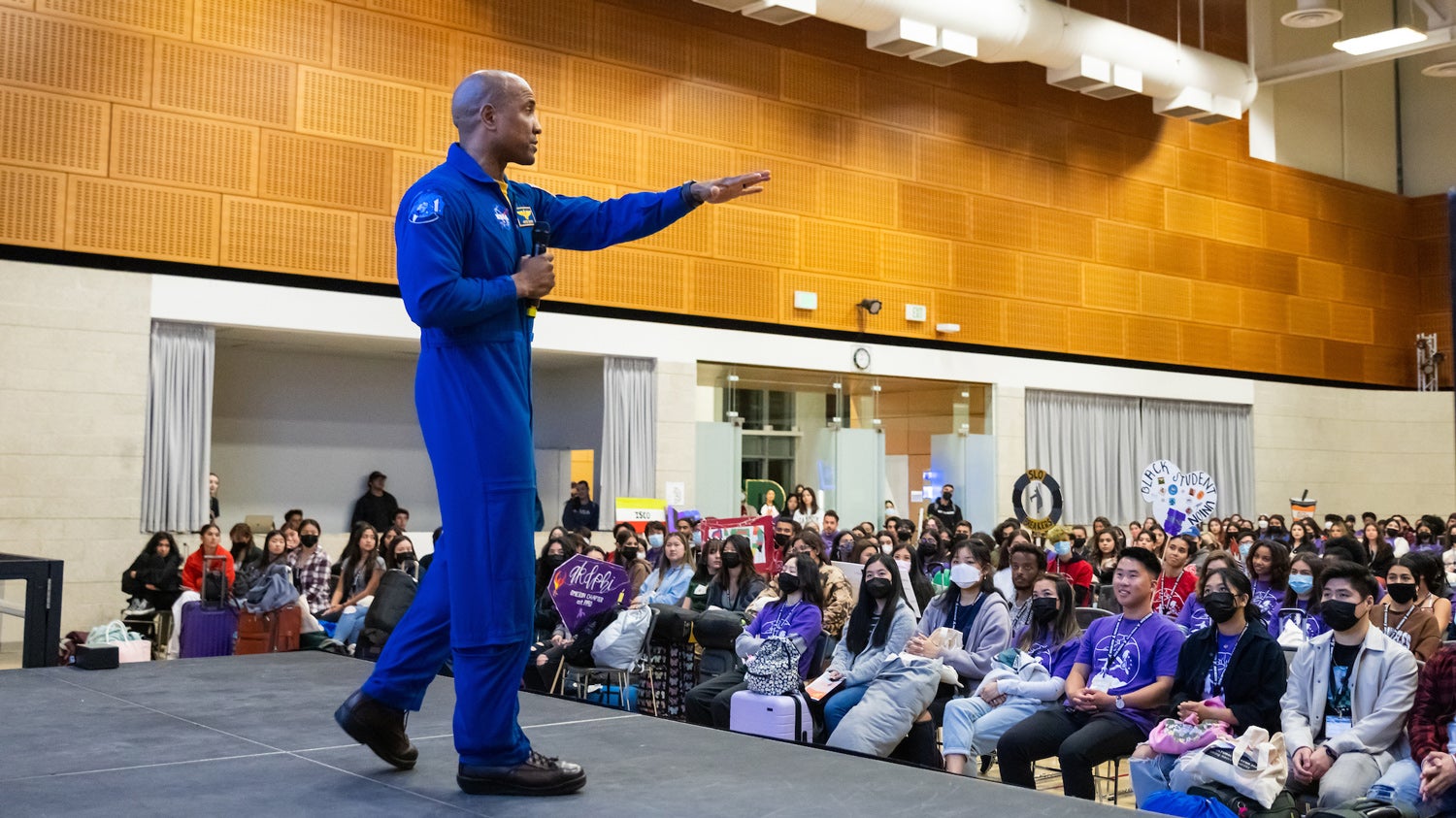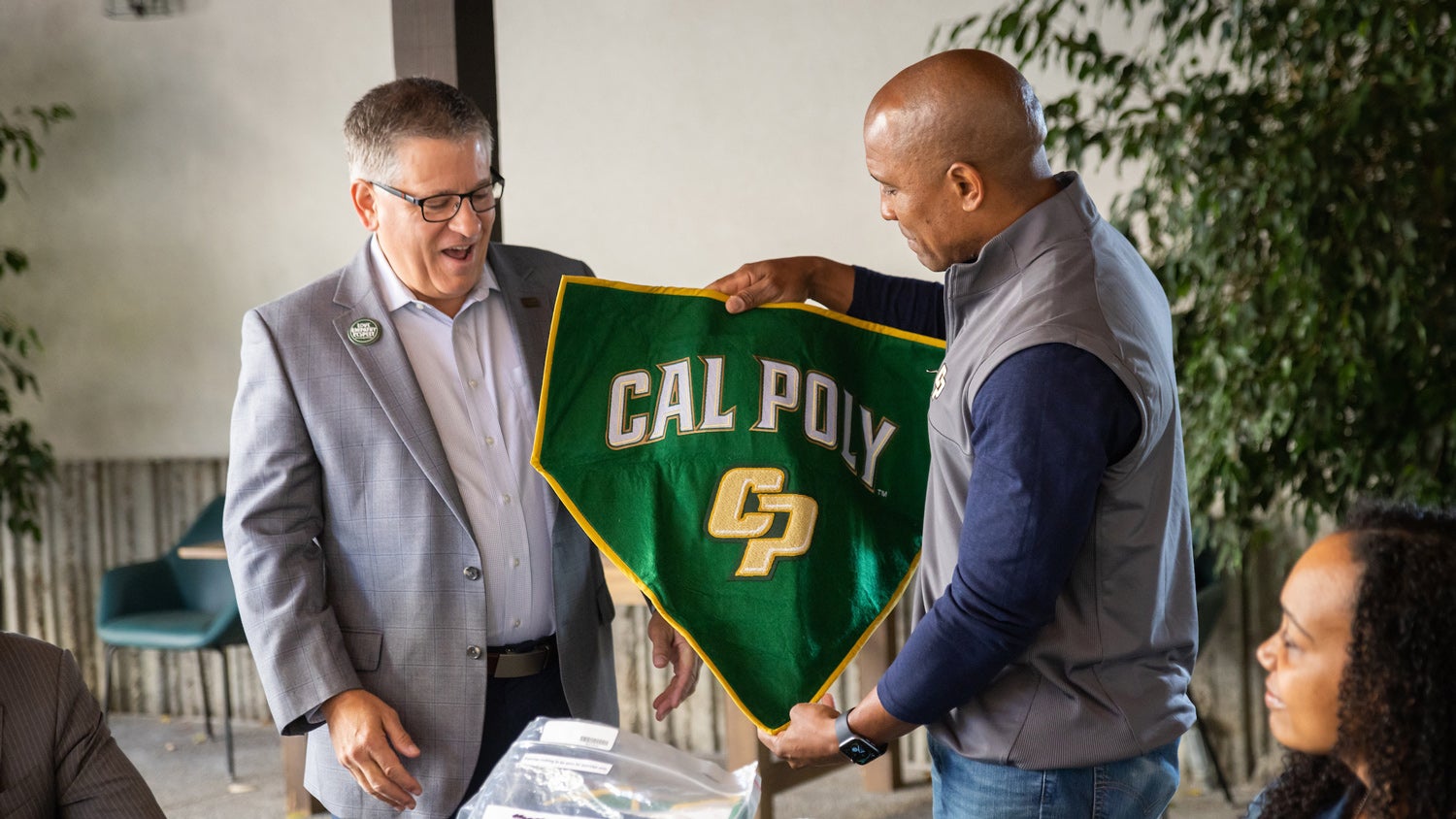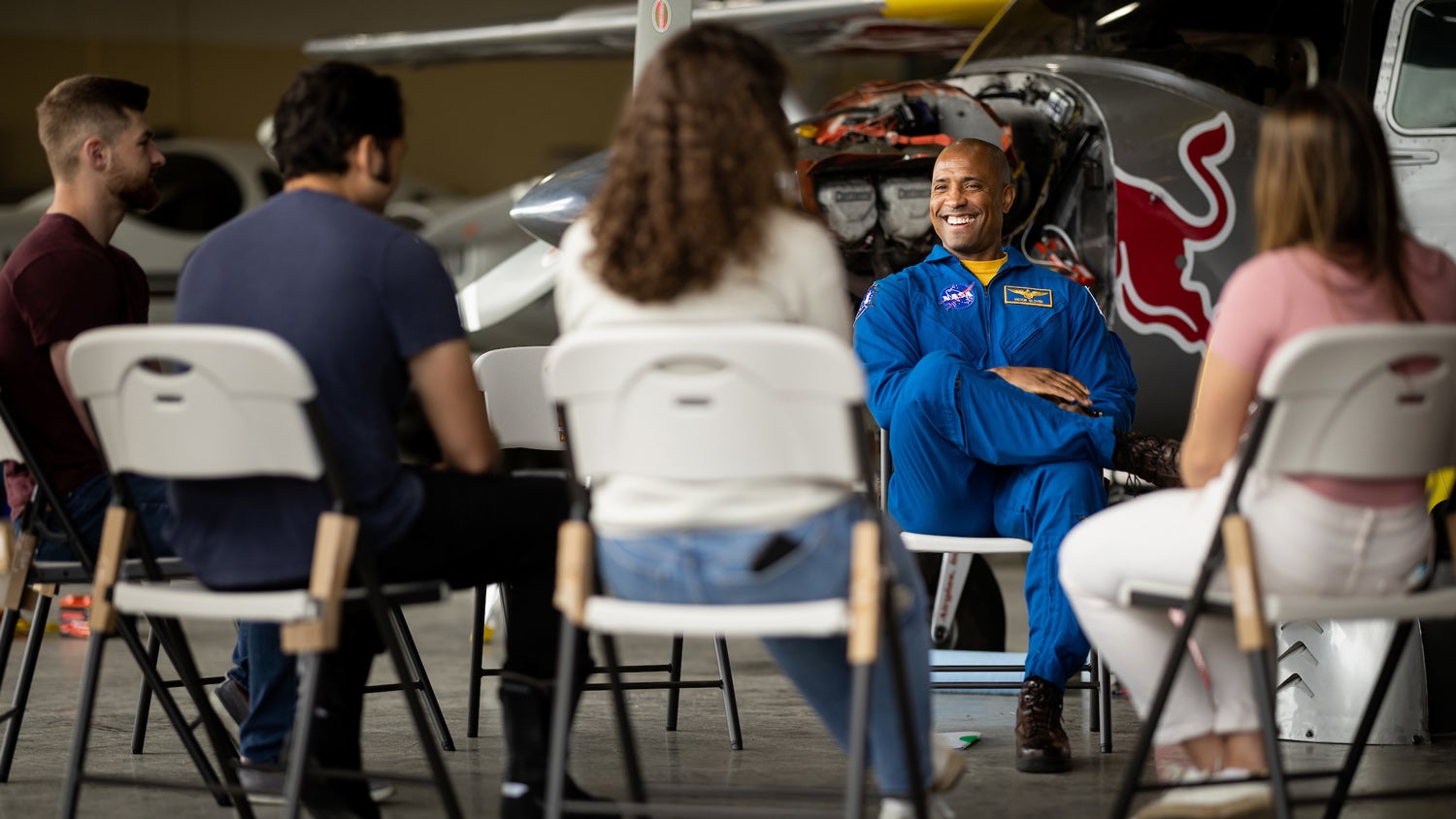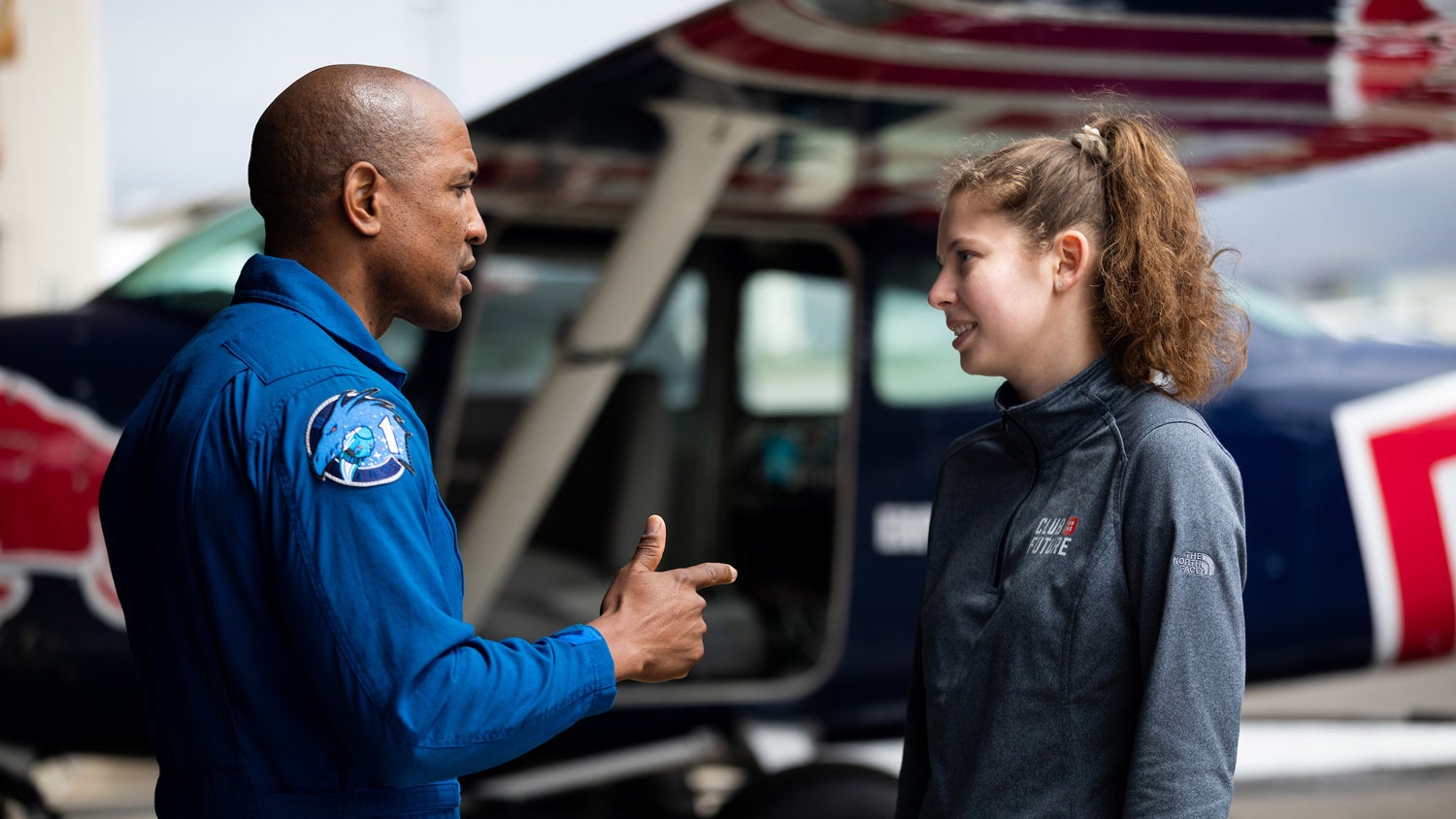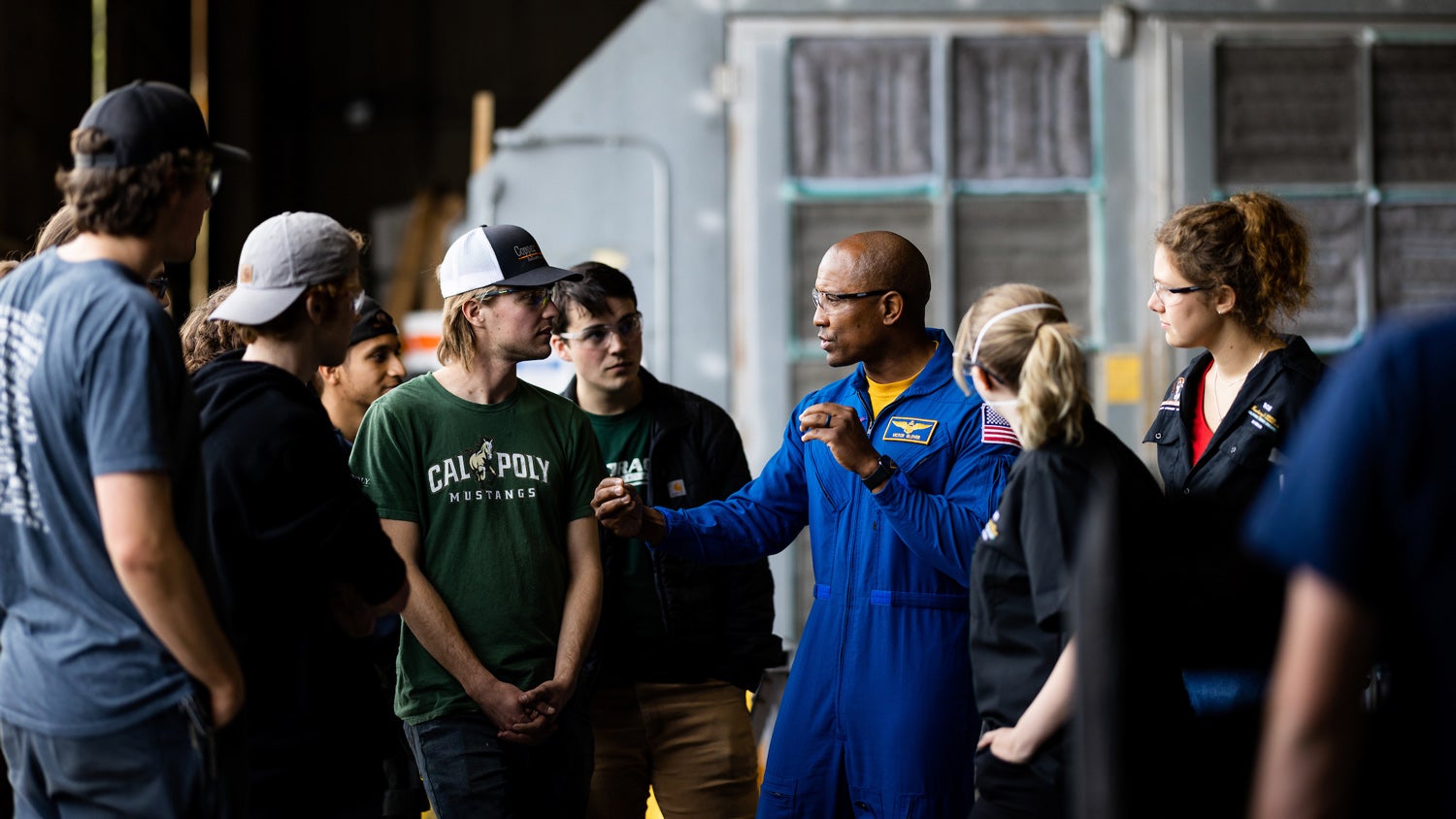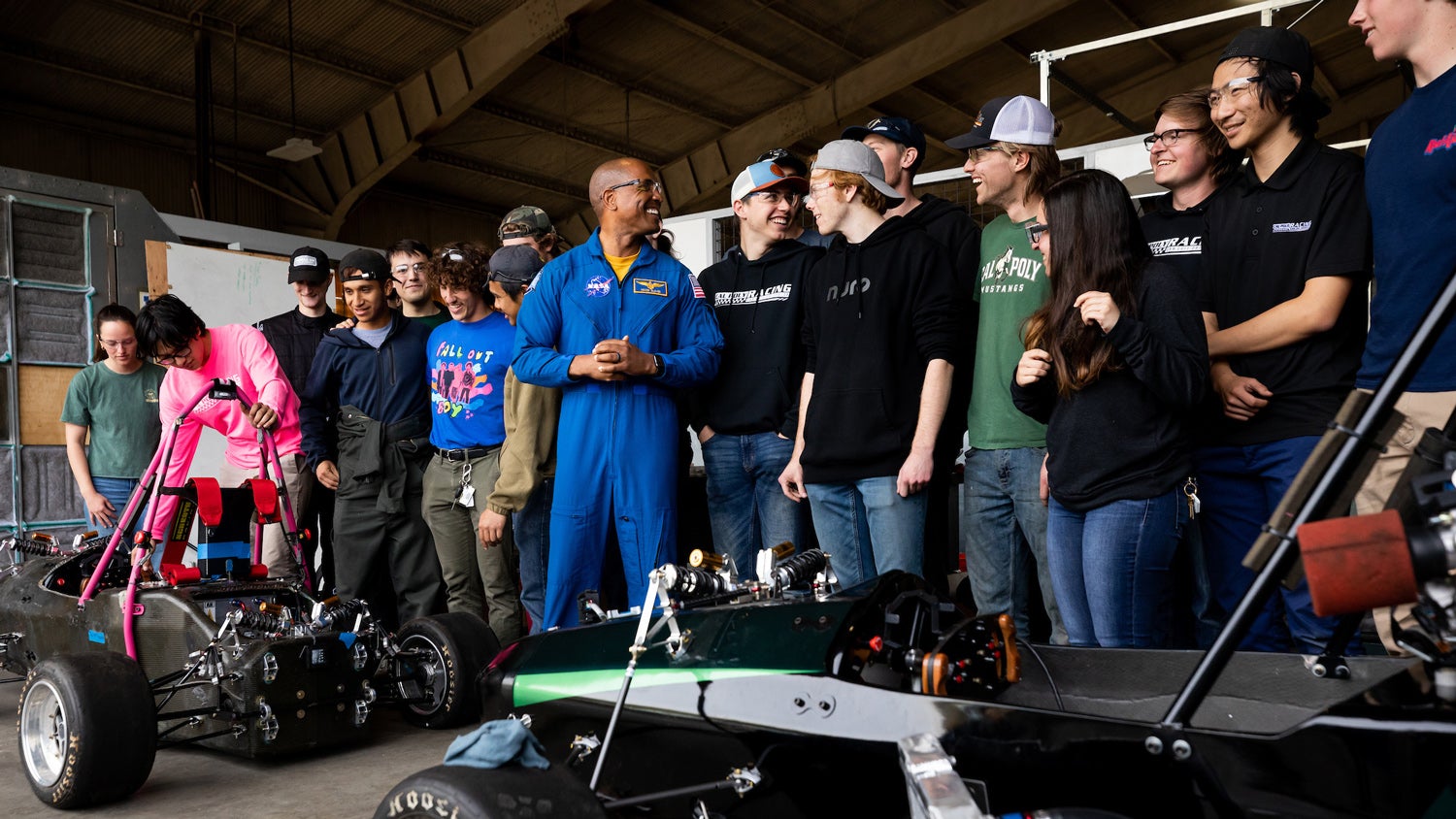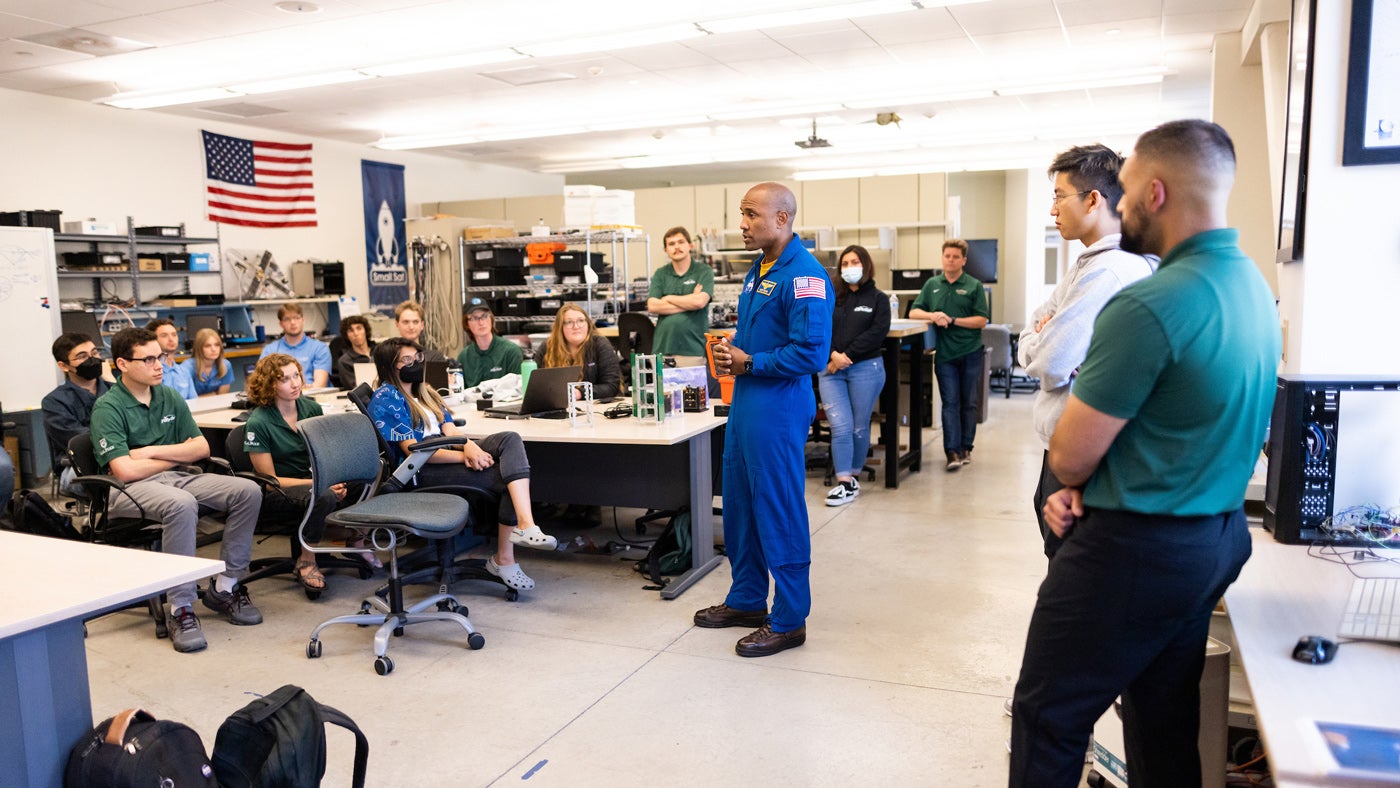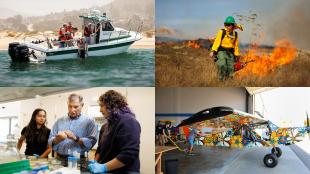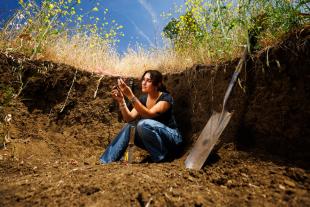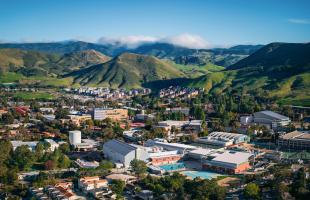Down to Earth: Captain Victor Glover Returns to Campus
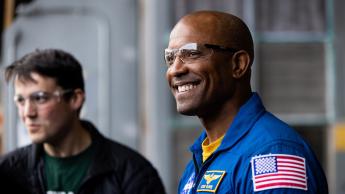
After a historic mission to the International Space Station, alumnus and astronaut Victor Glover made his way back to Earth — and 1 Grand Avenue. This time, he brought a few souvenirs from space and a fresh perspective he was eager to share with the Cal Poly community.
“All of the richness of life is right here,” he said of Planet Earth, “and that was made really evident when I left this place for six months.”
Glover served as pilot and second-in-command on the SpaceX Crew Dragon, named Resilience, which launched in November 2020. Once on the ISS, the Navy captain and test pilot became the first Black astronaut to complete a long-term stay on the vessel. During his 168 days in space as a station systems flight engineer, Glover completed three spacewalks, spoke with Vice President Kamala Harris, and delivered Cal Poly’s fall 2020 commencement address.
Before he landed, he also learned his eldest daughter was going to attend Cal Poly, a moment of joy only enhanced by zero gravity.
“I literally was doing flips around the space station just because I could,” Glover recalled during an event on campus. “That felt really good because my wife and I met here and we have worked hard to continue to support this place.”
During their two-day visit in early April, Glover and his wife Dionna Odom Glover, who was a child development major at Cal Poly, inspired a variety of student groups. They kicked off their trip with breakfast, hosted by President Jeffrey D. Armstrong, and attended by faculty, staff, students and CSU Trustee Romey Sabalius. As they ate, Glover returned some very special items that flew with him on the ISS: two Cal Poly banners and green-and-gold socks.
That evening, Glover delivered powerful opening remarks at the university’s annual PolyCultural Weekend (PCW), greeting future Mustangs from diverse backgrounds who are considering attending Cal Poly. The student-led event helps hundreds of high school students who have been accepted to Cal Poly connect with clubs, mentors and resources to help them thrive. Glover’s pride in his alma mater shone through as he spoke.
“This is, hands down, one of the best academic institutions in the state and the nation,” he said from the stage. “That part you all know — that's why you're sitting in this room — but this is also a place that you can really become the best you that you can be.”
Glover, who played football and wrestled while earning his engineering degree, passionately recounted the work he did as a student in hopes of helping future Mustangs. In the wake of Prop 209 passing and ending affirmative action in the 1990s, he was part of the Cultural Crisis Coalition student organization that successfully convinced ASI leaders to fund student success programs to recruit, retain and graduate students from underrepresented backgrounds. More than 20 years later, Glover was thrilled to see that effort blossoming through programs like PCW.
“The way I felt when my daughter told me she was going to come here, I feel the same way for you,” Glover said. “This place has changed for the better, and we still have more to do.”
Glover also met with the wrestling team, talked with students in the Black Academic Excellence Center, toured the Aerospace Engineering Hangar and explored the on-campus CubeSat lab. He ventured off campus to inspire a class of curious fifth graders at Teach Elementary School nearby.
At the San Luis Obispo Regional Airport, Glover met with Professor Paolo Iscold to check out the hangar space students use during hands-on aerospace engineering courses. Glover then talked shop with students involved in Project Mobius, an experimental solar powered aerial vehicle that aims to fly non-stop for 24 hours. Students asked Glover about his favorite plane (the F-18), the experience he missed when in space (“pulling some G’s”) and his biggest mentors at Cal Poly (Professor Jim LoCasio from the Mechanical Engineering Department).
“Dr. LoCasio took me from an engineering student to an engineer,” said Glover. “He told me, ‘You’re not at Cal Poly to get a job; you’re here to be a critical thinker, and you’ll get a good job along the way.’”
Glover also reflected on how the aerospace industry is changing with a sense of urgency.
“We need more brown folks, more women in STEM, and we need CEOs to say what I’m saying: you need this talent group to replace the ‘grey wave’,” the astronaut said, referring to the numbers of Baby Boomers in the industry nearing retirement age. “There won’t be enough engineers or technicians, and that creates a national security issue. It’s my job — and your job — to change this.”
More than anything, Glover wants to connect people to “the overview effect,” the perspective astronauts have when they see the Earth from 250 miles up, where borders disappear, the planet radiates beauty, and cooperation with teammates is everything.
“I think it helps you see the Earth in a different way. It's something we need to take care of because it's really one big spaceship that we're all flying on together.”
Glover is focused firmly on the future in many ways. He is part of NASA’s Artemis program, which plans to launch a series of uncrewed and crewed missions to the moon to establish a lunar base by 2030. Wherever he goes, he’ll be sure to take Cal Poly with him.
“This is truly my original launch pad. Cal Poly is the reason that I've been able to do some amazing things,” Glover said at PCW.
“Even before NASA I've lived what I would call an enchanted journey. And Dionna and I and the girls have been on this really amazing adventure together, and that really started here.”
Want more Learn by Doing stories in your life? Sign up for our monthly newsletter, the Cal Poly News Recap!

